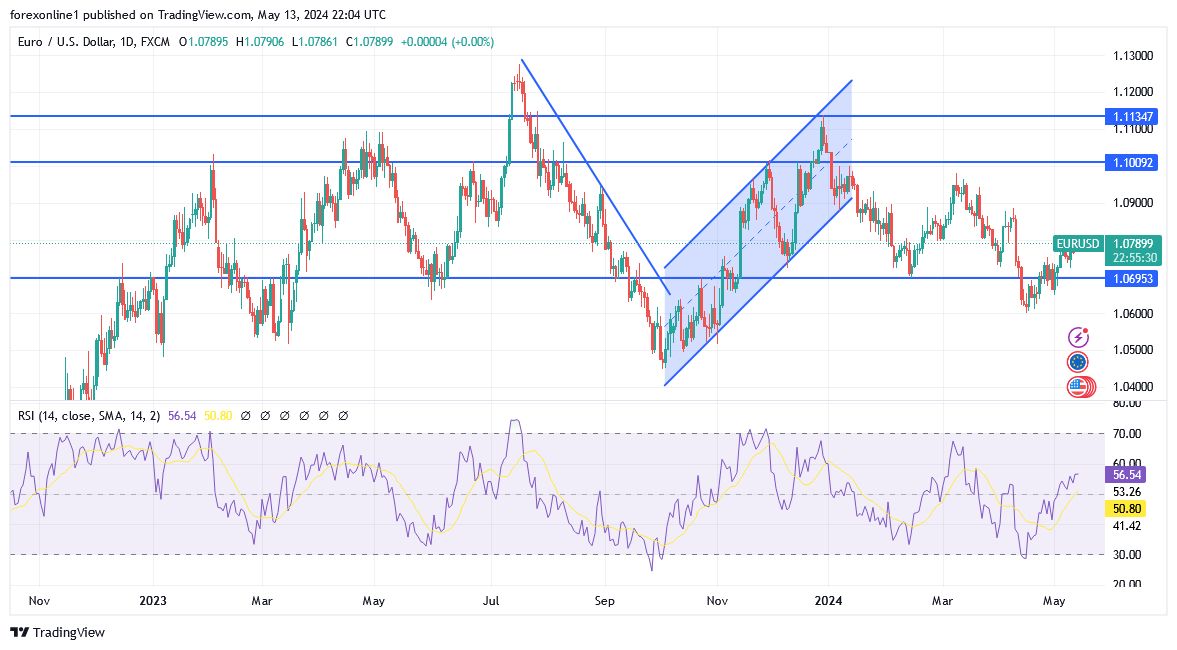- The euro has now completed four consecutive weekly advances, suggesting ongoing resilience that could continue if mid-week US inflation and retail sales data disappoint.
- As trading starts this week, EUR/USD is approaching the key psychological level of 1.08 but will require an unequivocally weak set of US numbers to reach it.

Turning to the economic calendar data this week, the market consensus expects an inflation reading of 3.4% year-on-year (0.3% month-on-month) and retail sales (0.4% month-on-month). The US Consumer Price Index (CPI) report, due out on Wednesday, will be the key data release this week. This comes after several strong inflation readings. Also, the signs of an economic slowdown shown by other indicators, so it will be important for investors to assess the likelihood of rate hikes and cuts from the Fed this year."
Top Forex Brokers
Furthermore, the recent strength of the EUR/USD comes on the back of weaker-than-expected US data that suggests US economic exceptionalism may be fading. If inflation and retail sales come in below expectations, the recent US dollar decline could extend as market confidence grows that the Federal Reserve will cut US interest rates more than twice this year.
As recently reported, Initial unemployment claims - unemployment benefits - rose by 231,000 last week, which is usually an early sign of layoffs. The highest reading in nearly nine months supported the case for lowering interest rates.
The dollar had started 2024 with as much as 150 basis points of cuts priced in by markets, but that had been trimmed to just 25 basis points by mid-April, which had lifted the dollar to its highest levels this year. Recently, another 25-basis point cut has been priced back into expectations, which explains some of the dollar's recent weakness. It could weaken further if confidence in additional cuts starts to grow. Also watch for comments from Fed Chair Jerome Powell, who is due to speak on Tuesday and could inject some near-term market volatility ahead of the mid-week data dump.
On the other hand, according to stock trading platforms, European stock market indexes closed slightly lower on Monday, with the STOXX 50 and STOXX 60 indexes falling below the flat line as investors await key US inflation data, Q1 GDP and eurozone employment figures due out this week. In trading, construction and materials stocks fell 0.9%, while auto stocks rose 1.4%. also, Orsted shares fell by almost 4% after reports that Republican US presidential candidate Donald Trump would hinder offshore wind power development if re-elected. On the other hand, Maersk shares rose by more than 7% despite concerns raised by its CEO about continued trade disruptions next year. Likewise, Siemens Energy shares were flat after the German conglomerate updated its 2024 prospect.
EUR/USD Technical analysis and forecast:
According to the performance on the daily chart below, the EUR/USD exchange rate still lacks strong momentum to confirm an upward shift. Currently, the 200-day moving average is near 1.08, as depicted in the chart below, indicating the technical difficulty of this level. Traders widely reference the 200-day moving average (DMA) in search of market support and resistance signs, and unless there are some weak US prints next Wednesday, the EUR/USD exchange rate may remain confined below the glass ceiling of the 200 DMA.
Presently, the EUR/USD pair is in a triangular formation, with the 50-day and 200-day simple moving averages slightly below $1.08, while supported from below by the 21-day simple moving average at the $1.07 level. Further weakness in the dollar is crucial, and the pair will rise above $1.08, given the strong upcoming technical resistance barriers. However, the psychological resistance at 1.1000 will remain crucial to confirm the overall trend reversal.
Ready to trade our Forex daily forecast? We’ve shortlisted the best European brokers in the industry for you.

